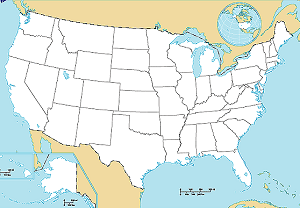
The FamilySearch Library in Salt Lake City, Utah is 50.4 miles from my home in Provo, Utah. On a good day, using the freeway, I can drive from home to the library in about an hour. Of course, when I get to the library, I have to figure out where to park and so the actual time is more like an hour and a half. For an alternative to driving, I can drive for seven minutes to the Provo train station and ride a train to Salt Lake in an hour. I can then take the local light rail TRAX right to the corner by the library. No parking. No freeway. This takes about an hour and forty minutes, depending on the schedule and if I hit the train at the right time and don't have to wait. Today, that trip will take me about two and a half hours because I missed an earlier train and had to wait an extra half hour. But the train has WiFi and electrical outlets and I am writing this, in part, while traveling on the train.
What if I walked? According to Google, that same trip (a little shorter by a more direct route, would take me 14 hours and 46 minutes. I suggest that I could probably walk, at most, about 20 miles a day and so, in reality it would take me more than two full days of walking. If I could only make 10 miles a day, the trip would start to stretch out into four or five days. That would require camping out or finding hotels or motels at the right distances to stop for the nights. How many times would I make the journey if I had to walk? Of course, I would not be able to do much else than walk while I walked. In fact, after twenty miles or so, I might not be able to do much more than sleep.
The point is simple. Most of our ancestors did not have cars, or trains, or WiFi, or need parking spaces. This may seem obvious but I often find a distinct lack of perspective in the claims about how, when and where their ancestors lived, got married, and then died. For example, I have had people add children to a family living in the United States that were born in England. Is this possible? Yes, theoretically. But when did this family live? Many times I see this claim for families that lived in the mid- to early 1800s. The time it took a sailing ship to cross the Atlantic could vary from about 6 weeks to almost 6 months. The Mayflower, for example, took 66 days and remember, there was no communication available from America back to England other than turning around and sailing back. So the passengers' relatives and friends in England did not even know if they had made it to America for many more months. In fact, the Mayflower passengers spent much longer on the ship simply waiting to leave.
Some of my ancestors lived in Northern Arizona during the late 1800s. To return to Southern Utah to visit relatives or for marriages in the LDS Temple in St. George, the journey could take more than three weeks one way. I can drive the same distance today in a few hours.
What does this all mean for genealogy research? The answer is plain. As we go back in time, we need to adjust our perspective. A man and a woman whom we find and claim as ancestors may have lived in two different towns. The towns may only have been 50 miles apart but that fact raises a question as to how they became acquainted? What contacts did the two towns have? Why would they have visited the other town? When I was a teenager living for the summer in a small town in Eastern Arizona, I was talking to an older girl in her 20s and she informed me that she had never been outside of her town. She had never been the 45 miles to the next, much larger, community in her whole life. Even then, I thought this strange, but it would not have been that unusual for many of our ancestors.
When you start doing genealogy research, adjust your thinking to the reality of the time period when your ancestors lived. Take the time to think about your conclusions and make sure they reflect the reality of the time it took your ancestors to travel from one part of their world to another. Identifying places is of the highest priority in doing accurate genealogy research.
Written by James L. Tanner. Used with permission.
Need help finding more records? We have genealogy research services available. You can also try our genealogical records directory which has more than 1.3 million sources to help you more easily locate the available records.